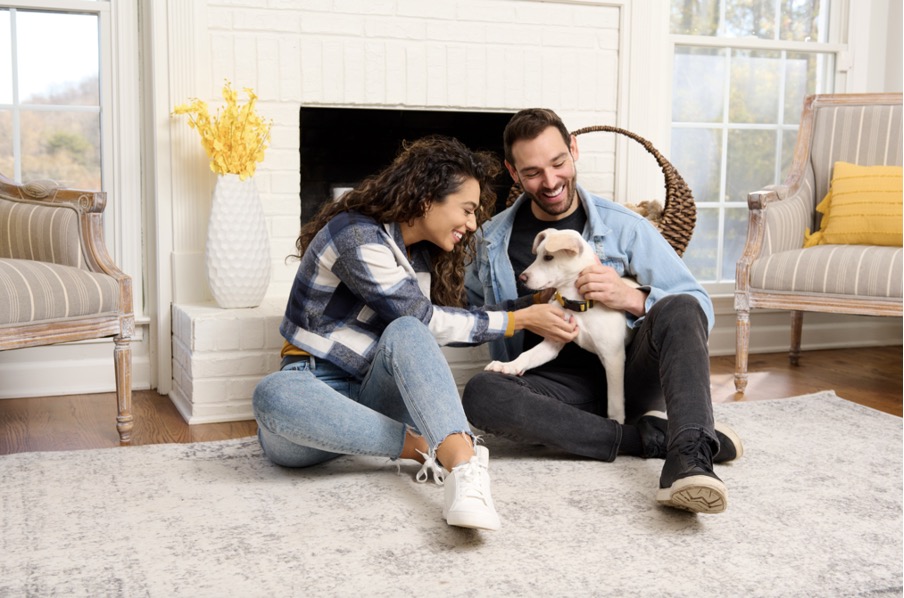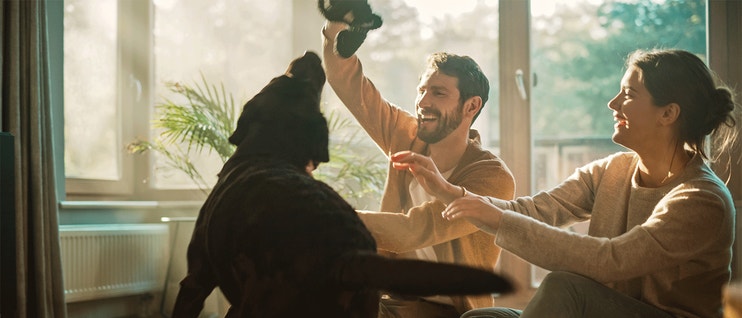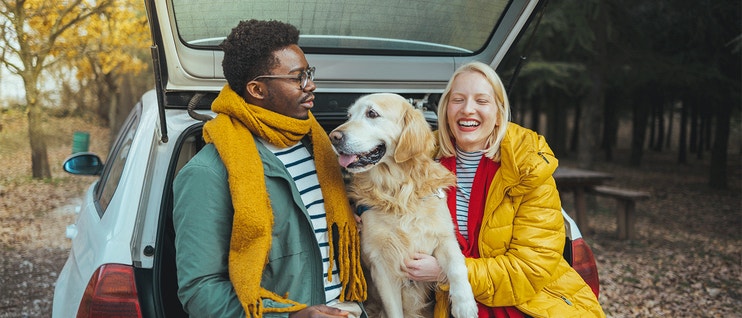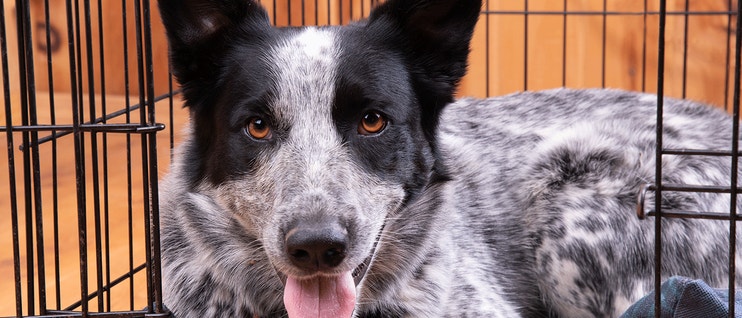
What to Expect When Adopting a Puppy
Bringing home a new puppy is an exciting and joyful experience…and it also comes with its fair share of challenges. For first-time pet parents, the initial weeks can be a rollercoaster of emotions and surprises. In this article, we’ll guide you through what to expect when adopting a puppy, the 3-3-3 rule, how to combat common challenges, and valuable tips for a smooth transition into puppy parenthood.
Preparing to Bring Your New Puppy Home
Making your home dog-friendly is an essential step to ensure the safety, comfort, and well-being of your new pet. While over time you will get to know your pup and their likes and dislikes, your visit to the shelter is a great opportunity to ask about their behaviors so you can ensure that you’re prepared to give them the best possible start.
Prepping for your furry friend includes but is not limited to:
● Ensuring yard boundaries are safe and secure
● Providing a comfortable dog bed or dog crate and bedding
●Checking their current diet so you can feed them what they're used to
Luckily, we’ve compiled the Dog Adoption Prep Checklist with Adopt a Pet, which details all of the essential dog supplies you need to make your preparation smooth and stress free. Once everything is in place and you're ready for your new puppy, a good system to consider is the 3-3-3 rule, which details what’s expected in the first three days, three weeks, and three months.
The 3-3-3 Rule

The 3-3-3 rule refers to a structured approach for introducing a new dog to their environment. The rule emphasizes three days, three weeks, and three months as crucial milestones in helping a dog acclimate to their new home. Adhering to the 3-3-3 rule helps create a positive and supportive transition for dogs and fosters a strong foundation with the pup. Remember each dog is an individual and the time they need to feel settled will vary: puppies are more likely to adjust quickly while older dogs may transition a bit more slowly.
The First Three Days
It's important to give your new dog plenty of time to get used to their new environment and not put too much pressure on them (or yourself!) to settle in straight away.
In the first three days, your new dog might be anxious and overexcited. Don't forget they are likely to be a bit confused as they are in a new place with new people, and they don't know how long they are going to be there.
While it's exciting for you, it's pretty scary for them, so make sure you give them plenty of space and time. They might be full of energy or completely nervous and shy. They might forget their toilet training or cry at night. They also might test the boundaries by being destructive or ignoring you.
For the first few days, your focus should be on creating a calm environment for them, rewarding good behavior - like calmness or relieving themselves outside- and bonding.
Dogs love routine. Try to have set times for walks, food, and play and ensure they get plenty of quiet rest. And don't worry, it's totally normal for them (and you!) to need some time to settle in.
The First Three Weeks
By now, your dog is probably getting settled into their new routine such as when to expect mealtimes, walks, and the general vibe at your home. As a result of this new comfort, you may notice them becoming less fearful or stressed and their personality starts to shine through.
As your dog gains confidence, they may test boundaries. This is a great opportunity to introduce positive, reward-based training because it will strengthen the bond with your new puppy and teach them foundational behaviors. It's important that you stick to your routine and reward behaviors you would like to continue while ignoring or redirecting less desirable behaviors. For example, if your puppy sits near you, reward them with some scratches, and if they find a shoe to be a delectable chew toy, redirect them to a more appropriate toy (and be sure to keep shoes and other items out of their reach going forward).
The First Three Months
After about 12 weeks, your dog will settle in, trust their new home, and feel secure around you and your family. They will also have adjusted to their daily routine and adopted suitable habits and behaviors for their new environment.
With your dog feeling comfortable and settled, now is the perfect time to focus on developing your bond and trust by continuing to train them.( Also don’t forget to congratulate yourself on doing a fantastic job at building a great relationship!)
Common Challenges When Adopting a Puppy
While adopting a puppy brings an abundance of joy, fun, and snuggles. It’s also a time of unpredictability. As you gradually get to know your pup, you’ll learn more about what they like and dislike, their attachment style, how they respond to praise and cues, and more. But during the beginning, you could be faced with some obstacles.
Let's delve deeper into some common challenges associated with adopting a puppy and how you can combat them:
House Training:
Problem: Puppies may not understand where it's appropriate to relieve themselves, leading to accidents indoors.
Solution: House training takes time and patience. Be consistent with a schedule, take your puppy outside frequently (especially after eating or waking up), and use positive reinforcement when they use the bathroom in the designated area. Close supervision of your puppy also aids in house training. Blocking off areas of the home that are out of view can help keep them close.
Chewing:
Problem: Puppies explore the world with their mouths which leads to chewing on furniture and other items.
Solution: Provide a variety of chew toys to satisfy their natural urges. Whenever you catch them chewing on something inappropriate, redirect their attention to an approved toy. Puppy-proof your home by removing items that may tempt them or that you want to avoid being chewed on.
Biting and Nipping:
Problem: Puppies use their mouths during play and that can be uncomfortable for humans.
Solution: Puppies learn bite inhibition through play with littermates. Start by redirecting them to an appropriate chew item. If your puppy nips again, briefly pause play by standing up. After a few seconds, return to play. But if they nip again, give them a longer period of time without direct play. This teaches them that good play manners equals continued fun, while poor manners stops the play.
Socialization Challenges:
Problem: Lack of socialization may result in fear or aggression towards other dogs and people.
Solution: Be sure to let your puppy experience plenty of new places, pets, and people by selecting appropriate areas to bring them. Let them meet known dogs who are up to date on their vaccinations, and when going to new places, hold your puppy so that they can experience the new stimuli without coming in contact with unknown dogs or fecal material from other animals. Gradually increase the complexity of the environments to build confidence. And of course, chat with your vet about safe socialization practices if this will make you feel more at ease.
Separation Anxiety:
Problem: Puppies may experience anxiety when left alone which could lead to destructive behavior.
Solution: Start with short periods of separation and gradually increase the time. Create a comfortable space for your puppy with toys and familiar items. When leaving and returning to your puppy, avoid making it a big deal. Humans love the long goodbyes and hellos. But for dogs, the less eventful the comings and goings of people,the better.
Hyperactivity:
Problem: Puppies have lots of energy and may become hyperactive.
Solution: Regular exercise is essential. Provide walks, playtime, and mental stimulation through interactive toys or puzzle feeders. A tired puppy is more likely to be well-behaved.
Training Issues:
Problem: Inconsistent training can lead to confusion and disobedience.
Solution: Establish consistent rules and routines. Use positive reinforcement for desired behaviors. Enroll in puppy training classes to learn effective training techniques and build a strong bond with your puppy.
Struggling to Adjust:
Problem: Puppies may take time to adjust to their new environment.
Solution: Create a safe and comfortable space for your puppy. Establish routines for feeding, play, and potty breaks. Offer gentle encouragement and positive interactions to help your puppy feel secure in their new home.
Teething Troubles:
Problem: Puppies go through a teething phase, causing them discomfort and increasing chewing.
Solution: Provide teething toys, frozen washcloths, or special treats to soothe their gums. As some of these toys have liquid interiors that could leak if bitten into, it is best to supervise your puppies when playing with them. Rotate toys to keep them interesting and be patient during this phase, as it will pass.
Patience, consistency, and positive reinforcement are key to effectively communicating with and supporting your pup, and will ultimately result in progress. Building a strong bond with your puppy through love and guidance will help them grow into a well-adjusted and happy adult dog. If challenges persist, seek advice from a professional trainer or behaviorist for personalized assistance.
FAQS About Adopting a Puppy

How can I help my puppy adjust to their new home?
Patience is key. Allow your puppy to acclimate gradually and provide positive reinforcement when they exhibit a desired behavior. Spend quality time bonding with your new furry friend to build trust and create a strong connection.
When is the best time to start training my puppy?
The journey of nurturing your puppy begins the moment they step into your home, which is usually at around 8 weeks. Your top priority is ensuring they feel secure and establish a sense of routine so they have foundational trust. At this age, they are able to quickly grasp the cues to sit, stand, stay and come. Giving them basic training helps them grow into confident adult dogs.
What is puppy socialization and why is it important?
Puppy socialization goes beyond merely introducing your furry friend to other dogs—it involves exposing them to diverse people, stimuli, animals, and surroundings. Fostering your pup's comfort with the world at a young age is pivotal, as it sets the stage for smoother interactions with others down the road.
When should I start socializing my puppy?
The prime window for effective puppy socialization falls between weeks three and twelve. Considering that the final combination vaccine is typically administered around the 16-week mark, questions arise about when it's safe for a puppy to mingle with other dogs. The American Veterinary Society of Animal Behaviorists recommends socializing before all vaccinations are completed. This can be done by safely introducing your puppy to other dogs that are known to have up to date vaccinations and avoiding places where puppies could be introduced to unknown dogs or fecal materials.
What should I feed my puppy?
Choose a high-quality puppy food that meets the nutritional needs of your dogs age, breed, and size - such as PEDIGREE® dry or wet puppy food. Feed according to the package guidelines and monitor your puppy's weight and overall health. Consult with the shelter to find out more about their eating habits and the foods they like and respond well to. It’s worth noting that your pup may eat more or less during the initial adjustment period. If they establish any prolonged, abnormal behavior around eating, chat with your vet for personalized dietary recommendations.
How do I handle teething and chewing?
Provide appropriate chew toys to soothe teething discomfort and redirect any destructive chewing to appropriate items. Rotate toys to keep them interesting.
How can I ensure my puppy stays healthy?
In addition to regular veterinary check-ups, provide a balanced diet, regular exercise, and mental stimulation. Monitor their weight and consult your veterinarian for guidance on nutrition and preventive care.
Remember, patience is key
Remember that patience is the way to build a strong bond with your new four-legged friend. In the coming weeks and months, you can expect laughter, playfulness, and unconditional love. But it's crucial to brace yourself for the inevitable hurdles of training and adjustment, too. Over time, you'll witness remarkable growth and transformation, not only in your puppy's behavior but also in the profound connection that blossoms between you. Check out our articles on How to Train Your Rescue Dog or How to Build a Lasting Bond with Your Rescue Dog for more actionable tips and pet-parent advice.




